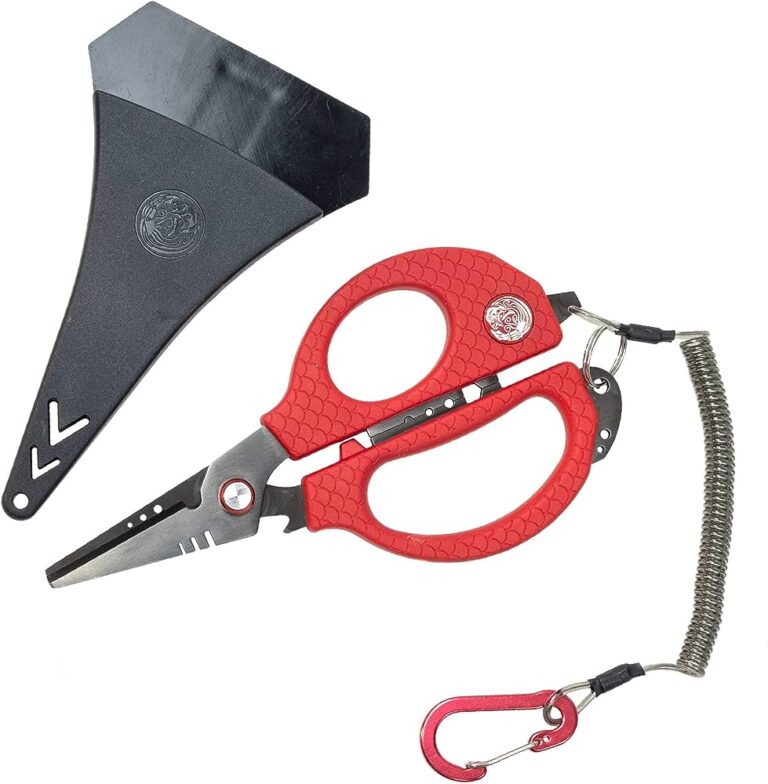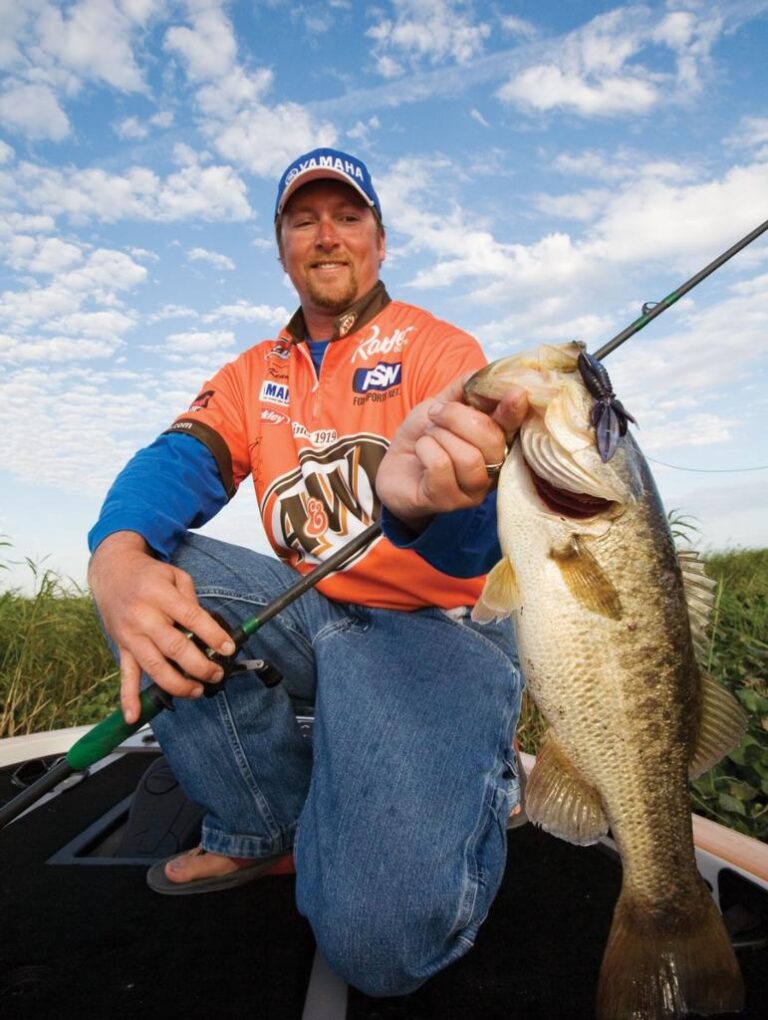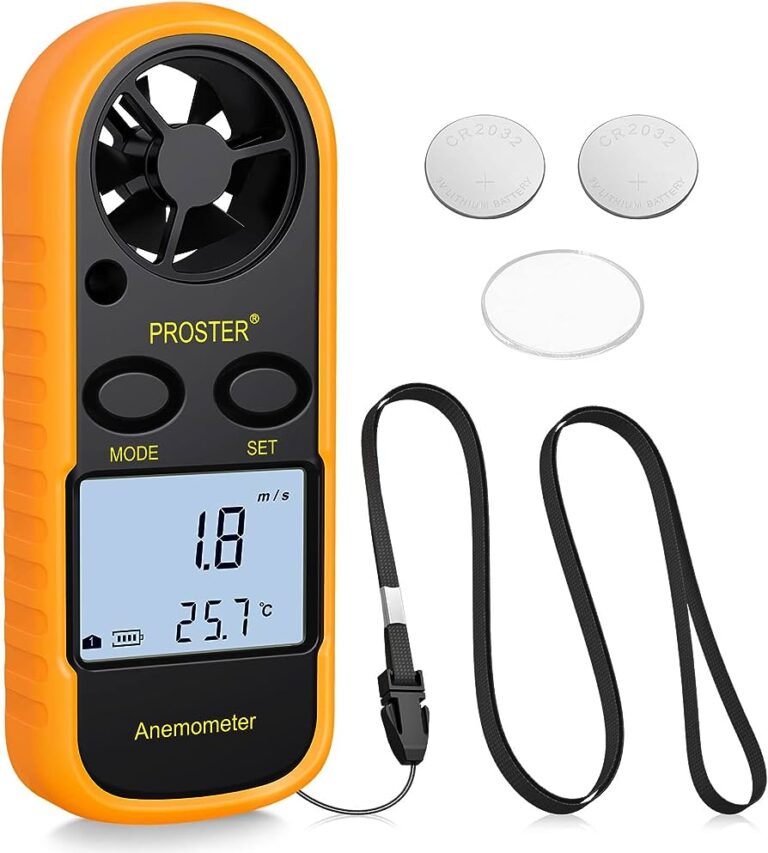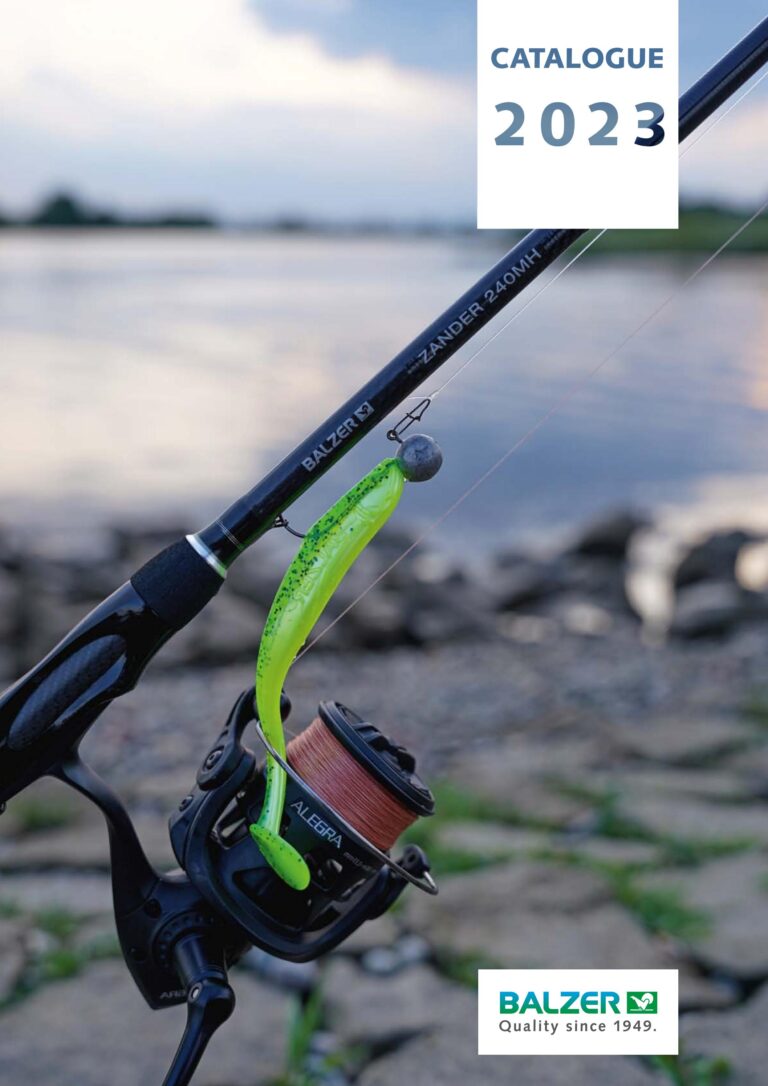For pier fishing, the ideal rod size depends on the target species and fishing conditions. Generally, a medium to heavy-action rod ranging from 7 to 10 feet is recommended for casting distance and control in saltwater environments.
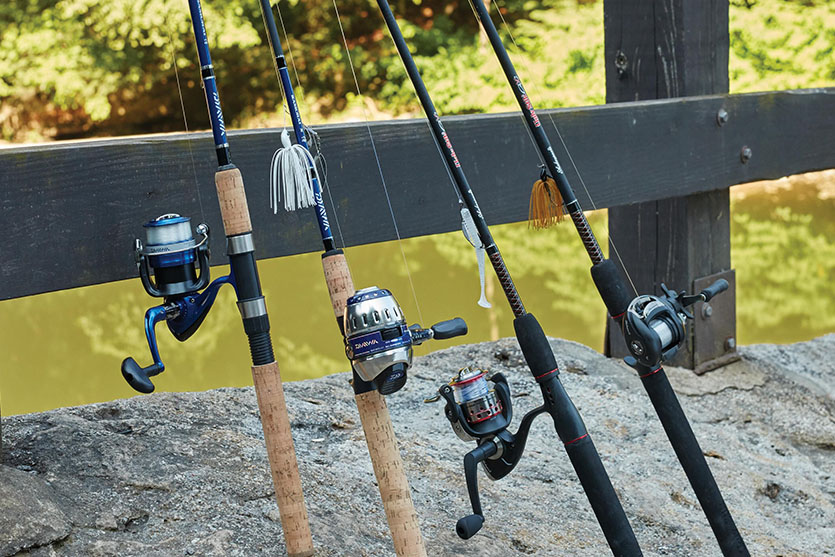
Credit: protips.dickssportinggoods.com
Understanding The Importance Of Rod Size In Pier Fishing
When it comes to pier fishing, choosing the right rod size is crucial to ensure an enjoyable and successful experience. The size of the rod you use can greatly impact your casting distance, control, ability to hook and land fish, and ultimately, your chances of reeling in your target species.
In this section, we will explore the factors to consider when selecting a rod size for pier fishing and the significance of rod length and power. Let’s dive in!
Factors To Consider When Choosing A Rod Size For Pier Fishing:
- Target species: Consider the size and weight of the fish you plan to catch. Larger, stronger fish require heavier rods to handle their weight and put up a good fight.
- Fishing location: Different piers may have varying water depths and structures. A longer rod allows you to cast farther and reach fish that are farther out, while a shorter rod offers better maneuverability in tight spaces.
- Casting distance: If you’re aiming for fish located far from the pier, consider a longer rod to maximize your casting distance. On the other hand, if the fish are closer to the pier, a shorter rod will suffice.
- Personal preference: Your own comfort and fishing style play a role in rod size selection. Some anglers prefer shorter rods for better control and ease of handling, while others opt for longer rods for increased leverage and casting distance.
The Impact Of Rod Length On Casting Distance And Control:
- Longer rods: Provide greater casting distance due to their increased leverage. They allow you to launch your bait or lure farther out into the water, reaching fish that are farther away from the pier. However, longer rods may be more challenging to control, especially in tight spaces or during windy conditions.
- Shorter rods: Offer better control and maneuverability, making them ideal for fishing in crowded piers or areas with obstacles. They provide a more precise and accurate casting experience, especially when targeting fish in close proximity to the pier. Nevertheless, their shorter length may limit your casting distance compared to longer rods.
How The Rod Power Affects Your Ability To Hook And Land Fish:
- Rod power: Refers to the rod’s ability to handle pressure and resistance. It determines the rod’s strength and resilience when fighting fish. Rod power is classified into various categories, such as ultralight, light, medium, medium-heavy, and heavy. Each power rating corresponds to the rod’s capability to handle different fish sizes and resistances.
- Light power: Ideal for smaller fish species with less resistance, providing a more sensitive feel for subtle bites.
- Heavy power: Suitable for larger, stronger fish that require extra backbone to hook and land. They can handle heavier lines and exert more pressure during the fight.
Finding the optimal balance between rod size and target fish species is essential in pier fishing. By considering the factors mentioned above and understanding the impact of rod length and power, you can select the right rod size that aligns with your fishing goals.
So, before you head to the pier, make sure you equip yourself with the perfect rod for a fruitful day of angling!
Selecting The Ideal Rod Length For Pier Fishing
Pier fishing is a popular activity enjoyed by anglers of all skill levels. When it comes to selecting the ideal rod length for pier fishing, there are several factors to consider. The length of the rod plays a crucial role in casting distance, control, and overall fishing experience.
In this section, we will discuss the advantages and disadvantages of shorter rods, explore the benefits of longer rods, determine the ideal rod length based on fishing location and conditions, and match the rod length with your physical attributes for a comfortable fishing experience.
The Advantages And Disadvantages Of Shorter Rods
Shorter rods, typically ranging from 6 to 7 feet, have their own set of advantages and disadvantages for pier fishing. Here are some key points to consider:
- Advantages:
- Increased maneuverability: Shorter rods allow for easier casting, especially in tight spaces where long-range casting isn’t necessary.
- Better control: With a shorter rod, it is easier to feel the movements of the fish and maintain control during the fight.
- Less strain: Shorter rods are generally lighter, reducing fatigue during long fishing sessions.
- Disadvantages:
- Limited casting distance: The shorter length restricts the casting range, which can be a disadvantage when trying to reach deeper waters from the pier.
- Reduced line control: Shorter rods may have less leverage, making it slightly more challenging to manage the line when battling larger fish.
- Less casting power: Shorter rods may lack the power needed to cast heavy lures or bait over longer distances.
The Benefits Of Longer Rods In Pier Fishing
Longer rods, typically measuring between 8 and 12 feet, offer their own advantages when it comes to pier fishing. Here are some key points to consider:
- Advantages:
- Extended casting range: Longer rods allow for greater casting distance, making it easier to reach distant feeding grounds.
- Improved line control: The extra length provides better leverage, helping to control the line during the fight with powerful fish.
- Enhanced hook-setting power: Longer rods can generate greater force when setting the hook, increasing the chances of a successful catch.
- Disadvantages:
- Reduced maneuverability: Longer rods can be more challenging to maneuver, especially in crowded piers or areas with limited space.
- Heavy and tiring: Longer rods tend to be heavier, which can lead to fatigue during prolonged fishing sessions.
- Increased risk of breakage: Due to their extended length, longer rods are more prone to breakage, especially when paired with heavy lures or bait.
Determining The Ideal Rod Length Based On Fishing Location And Conditions
The ideal rod length for pier fishing depends on various factors, including your fishing location and the prevailing conditions. Here are some considerations to keep in mind:
- Shorter rods (6-7 feet) are suitable for:
- Fishing in crowded piers or areas with limited casting space.
- Targeting smaller fish species or fishing with lighter tackle.
- Fishing in calm weather conditions or when distance casting is not crucial.
- Longer rods (8-12 feet) are ideal for:
- Fishing in open piers or areas with ample space for casting.
- Targeting larger fish species or fishing with heavier tackle.
- Fishing in windy conditions or when casting distance is crucial to reach deeper waters.
Matching Rod Length With Your Physical Attributes For A Comfortable Fishing Experience
It’s essential to match the rod length with your physical attributes to ensure a comfortable and enjoyable fishing experience. Consider the following aspects:
- Height and arm length: Taller anglers may find longer rods more comfortable to use, as they provide better reach and leverage. Conversely, shorter anglers might prefer shorter rods for better maneuverability.
- Strength and endurance: Longer rods tend to be heavier, requiring more strength and endurance during fishing sessions. If you have limited strength or prefer extended fishing periods, a lighter and shorter rod might be a better choice.
- Personal preference: Ultimately, personal preference plays a significant role in choosing the ideal rod length. Some anglers may prefer the versatility of a medium-length rod (7-8 feet) that offers a balance between maneuverability and casting distance.
Selecting the ideal rod length for pier fishing involves weighing the advantages and disadvantages of shorter and longer rods, considering the fishing location and conditions, and matching the rod length with your physical attributes. By carefully evaluating these factors, you can optimize your pier fishing experience and increase your chances of success.
Decoding Rod Power For Successful Pier Fishing
Pier fishing requires the right combination of skill, technique, and equipment. Among the essential tools you need is a fishing rod specifically suited for this type of fishing adventure. But with varying classifications like ultralight, light, medium, and heavy, how do you determine the ideal rod power for pier fishing?
Understanding The Various Rod Power Classifications
To choose the right rod power for your pier fishing excursions, it’s important to understand the different classifications:
- Ultralight: Ideal for smaller fish species, such as panfish or trout.
- Light: Offers a good balance between sensitivity and strength, suitable for catching smaller to medium-sized fish like snapper or sea bass.
- Medium: Provides more power and flexibility, making it suitable for targeting larger species like redfish or drum.
- Heavy: Designed for big game fish, such as tarpon or sharks.
Choosing The Right Rod Power For Different Fishing Techniques
Different fishing techniques require specific rod powers to maximize your chances of success on the pier. Consider the following:
- Casting: Look for light to medium power rods that offer better casting accuracy and control.
- Jigging: Opt for medium to heavy power rods to handle the vertical movement of jigs and lures.
- Bottom fishing: Choose medium to heavy power rods for the strength needed to fight against the resistance of the ocean floor.
- Live bait fishing: Light to medium power rods work well for the finesse required in presenting live bait to target fish.
Factoring In The Size And Strength Of The Target Fish Species
When selecting a rod power for pier fishing, always take into account the size and strength of the fish species you are targeting. Keep the following in mind:
- Smaller fish: Ultralight to light power rods are suitable for smaller fish species that inhabit pier environments.
- Medium-sized fish: Light to medium power rods provide the right balance of strength and sensitivity for fish that fall into this category.
- Larger fish: Medium to heavy power rods are essential when tackling larger species that might put up a fierce fight.
Balancing Rod Power With Fishing Line And Terminal Tackle Selection
Apart from rod power, it’s equally crucial to consider your fishing line and terminal tackle selection. Maintain a proper balance to optimize your pier fishing experience:
- Light power rods: Pair them with lighter fishing lines and terminal tackle to ensure better sensitivity and finesse.
- Medium power rods: Match them with medium-strength lines and terminal tackle to achieve a good balance between strength and sensitivity.
- Heavy power rods: Go for heavier lines and terminal tackle to handle the increased strength and power required for battling big game fish.
By understanding the various rod power classifications, choosing the right rod for different fishing techniques, factoring in the target fish species’ size and strength, and balancing rod power with fishing line and terminal tackle selection, you’ll be well on your way to a successful pier fishing experience.
So, gear up, head to the nearest pier, and enjoy the thrill of reeling in some beautiful catches!
Exploring Rod Action For Enhanced Pier Fishing Performance
When it comes to pier fishing, selecting the right rod size is crucial for a successful outing. But have you ever considered the importance of rod action? Rod action refers to the amount of flexibility or stiffness a fishing rod has along its length.
Different types of rod action can greatly impact your casting accuracy, hook-setting capability, and overall performance on the pier. In this section, we will delve into the differentiating factors between fast, medium, and slow action rods, the impact of rod action on your fishing experience, and how to select the appropriate rod action based on fishing conditions and target species.
Differentiating Between Fast, Medium, And Slow Action Rods
Understanding the differences between fast, medium, and slow action rods will help you make an informed decision when choosing the right rod for your pier fishing adventures. Here are the key points to consider:
- Fast action rods are stiff at the tip, allowing for quick and powerful casts. They excel in long-distance casting and are ideal for larger fish species or when fishing in windy conditions.
- Medium action rods provide a good balance between flexibility and responsiveness. They offer better control and accuracy for both short and long-distance casts and are suitable for a wide range of fishing scenarios.
- Slow action rods are incredibly flexible along their entire length, bending further towards the handle. They offer a delicate presentation, making them ideal for smaller fish species or when using lighter baits.
The Impact Of Rod Action On Casting Accuracy And Hook-Setting Capability
Your rod’s action plays a crucial role in both casting accuracy and hook-setting capability. Here’s why:
- Casting accuracy: Fast action rods allow for precise and powerful casts, making it easier to reach your desired target area on the pier. Medium action rods offer better control, enabling you to cast with greater accuracy. Slow action rods may sacrifice some casting distance but provide a more subtle presentation, ideal for targeting specific areas.
- Hook-setting capability: Fast action rods have a quick tip recovery, ensuring a solid hook set. Medium action rods provide a balance of sensitivity and hook-setting power, enabling you to detect even the slightest nibbles. Slow action rods excel in hooking smaller fish with lighter bites due to their increased flexibility.
Selecting The Appropriate Rod Action Based On Fishing Conditions And Target Species
To maximize your success on the pier, it’s essential to select the optimal rod action based on the fishing conditions and your target species. Consider the following factors:
- Fishing conditions: In windy conditions or when casting long distances, a fast action rod will offer better control and power. For calm waters or when finesse fishing is required, a slow action rod may be your best choice. Medium action rods are versatile and can adapt well to varying fishing conditions.
- Target species: Larger fish species require the power and strength of a fast action rod. Medium action rods work well for a wide range of species, making them a safe bet. Smaller fish species or those that are more finicky may require the finesse and sensitivity of a slow action rod.
Fine-Tuning Your Rod Action Preferences For Personalized Fishing Style
Finding your preferred rod action is all about personal preference and discovering what works best for your fishing style. Here are some tips for fine-tuning your rod action preferences:
- Experimentation: Try different rod actions in different fishing scenarios to see which one suits your fishing style and delivers the desired results.
- Consultation: Seek advice from experienced anglers or fishing guides who are familiar with the local pier fishing conditions and target species.
- Practice: Practice casting and hook-setting techniques with your chosen rod action to build confidence and improve your overall performance.
Remember, selecting the right rod action is just one part of the equation for successful pier fishing. Be sure to also consider factors like line strength, reel type, and bait selection to optimize your chances of landing that prized catch.
So go ahead, explore the different rod actions available, and enhance your pier fishing performance!
Enhancing Your Pier Fishing Experience With Specialized Rod Features
Pier fishing is a thrilling and rewarding activity that allows you to cast your line into deeper waters and target a wide range of fish species. To make the most of your pier fishing experience, it is crucial to choose the right rod with specialized features.
In this section, we will explore the benefits of telescopic and multi-piece rods for easy transportation, consider the advantages of graphite versus fiberglass rods, evaluate reel seat types, and discuss the importance of incorporating rod guides.
Exploring The Benefits Of Telescopic And Multi-Piece Rods For Easy Transportation
Telescopic and multi-piece rods offer several advantages for pier fishing enthusiasts, particularly when it comes to portability. Here are the key points to consider:
- Telescopic rods:
- These rods are collapsible, allowing for easy storage and transportation.
- They can be extended to different lengths, providing versatility when casting from various spots on the pier.
- Telescopic rods are lightweight and compact, making them ideal for travel and on-the-go fishing adventures.
- Multi-piece rods:
- These rods come in sections that can be easily assembled and disassembled.
- They offer the convenience of transportation, as they can be packed down to a compact size.
- Multi-piece rods are durable and provide similar performance to one-piece rods.
Considering The Advantages Of Graphite Versus Fiberglass Rods
Choosing the right rod material is essential to optimize your pier fishing experience. Let’s explore the benefits of graphite and fiberglass rods:
- Graphite rods:
- Graphite offers greater sensitivity, allowing you to detect even the slightest nibble.
- These rods are lightweight and provide excellent casting accuracy, making them ideal for targeting specific areas.
- Graphite rods have a faster action, meaning they flex and recover quickly, resulting in increased hook-setting power.
- Fiberglass rods:
- Fiberglass rods are renowned for their durability and flexibility, making them suitable for handling larger fish.
- They offer more resistance and forgiveness, making them ideal for battling fish with strong pulls.
- Fiberglass rods are cost-effective options for beginner pier anglers.
Evaluating Reel Seat Types And Their Compatibility With Pier Fishing
The reel seat plays a crucial role in ensuring a secure connection between the rod and reel. Consider the following points when evaluating reel seat types for pier fishing:
- Spinning reel seats:
- Spinning reel seats are the most common type and are versatile for various fishing techniques.
- These seats feature a fixed position, providing stability and ease of use.
- They are compatible with spinning reels, which are popular choices for pier fishing due to their versatility.
- Baitcasting reel seats:
- Baitcasting reel seats are designed specifically for baitcasting reels.
- These seats offer a more ergonomic grip and enhance casting accuracy for targeted presentations.
- Baitcasting reel seats are ideal for experienced anglers who prefer greater control and precision.
Incorporating Rod Guides And Their Role In Reducing Friction And Improving Casting Distance
Rod guides play a critical role in reducing friction and enhancing your casting distance during pier fishing. Consider the following points:
- Material:
- Stainless steel guides are commonly used due to their durability and corrosion resistance.
- Ceramic guides are smoother and reduce friction, allowing for longer casts.
- Consider rod guides with a low number of insert points to minimize resistance.
- Placement:
- Guides should be positioned in a way that ensures an even line flow during casting and reeling in fish.
- A good rule of thumb is to have smaller guides near the reel and larger guides towards the tip for better control and reduced line wear.
By considering these specialized rod features such as telescopic or multi-piece designs, selecting the right rod material, choosing a suitable reel seat, and incorporating quality rod guides, you can significantly enhance your pier fishing experience. Enjoy the thrill of casting your line from the pier and maximize your chances of reeling in that prized catch.
Happy fishing!
Expert Tips For Maintaining And Extending The Lifespan Of Your Pier Fishing Rod
Your pier fishing rod is an essential tool for reeling in those big catches. To ensure its longevity and optimal performance, it’s crucial to implement proper maintenance techniques. Here are some expert tips to help you maintain and extend the lifespan of your pier fishing rod.
Proper Cleaning And Storage Techniques To Prevent Corrosion
Proper cleaning and storage are vital for preventing corrosion and maintaining the overall condition of your pier fishing rod. Here are some techniques to follow:
- Rinse your rod with freshwater after each use to remove any saltwater residue or dirt.
- Use a soft cloth or sponge to gently clean the rod and remove any debris.
- Avoid using abrasive cleaning solutions or harsh chemicals, as they can damage the rod’s finish.
- Dry your rod thoroughly before storing it to prevent moisture-related damage.
- Store your rod in a cool, dry place away from direct sunlight to prevent warping and fading.
Maintaining Rod Guides And Reel Seat For Optimal Performance
The rod guides and reel seat play crucial roles in the performance of your pier fishing rod. Taking care of these components can help ensure smooth operation and prevent any issues while casting or reeling. Here are some tips to keep them in optimal condition:
- Regularly inspect the rod guides for any signs of wear, such as cracks, chips, or grooves. Replace damaged guides promptly to avoid line damage or breakage.
- Clean the rod guides regularly with a soft toothbrush or cloth to remove any debris or salt buildup.
- Lubricate the reel seat with a small amount of reel grease or oil to prevent it from getting stuck or corroding over time.
Evaluating Rod Components For Signs Of Wear And Tear
Keeping a close eye on the various components of your pier fishing rod is crucial to detect any signs of wear or damage. Regular evaluation will help you identify issues before they escalate and ensure the longevity of your rod.
Consider the following:
- Check the rod blank for any cracks or splintering. If you notice any damage, have it repaired or replace the rod to prevent it from breaking during a crucial fishing moment.
- Inspect the rod handle for any loose or damaged parts. Tighten or replace any loose or faulty grip sections to maintain a secure and comfortable hold.
- Examine the rod’s ferrules (the sections that connect multi-piece rods) for any damage or looseness. Replace worn or loose ferrules to ensure a sturdy connection.
Regular Maintenance To Ensure Longevity And Functionality Of Your Pier Fishing Rod
Regular maintenance is the key to prolonging the life and functionality of your pier fishing rod. By implementing these maintenance practices, you can enjoy years of successful fishing adventures:
- Check your rod before each fishing trip to ensure everything is in proper working order.
- Inspect the integrity of your rod’s guides, reel seat, and other components regularly.
- Clean your rod thoroughly after each use, following the proper cleaning techniques mentioned earlier.
- Store your rod in a protective case or rod holder to prevent accidental damage.
- Consider having your rod professionally serviced or repaired annually to address any potential issues.
By following these expert tips, you can maintain your pier fishing rod’s performance, prevent corrosion, and extend its overall lifespan. Remember, proper care and maintenance will pay off when you’re reeling in those trophy fish from the pier!
Conclusion: Finding The Perfect Size Rod For Your Pier Fishing Adventures
Summarizing The Importance Of Considering Rod Size In Pier Fishing
When it comes to pier fishing, the size of your rod plays a significant role in determining your overall fishing experience. Choosing the right size rod can make a huge difference in how successful and enjoyable your fishing adventures will be.
Here are a few key points to keep in mind:
- The length and weight of the rod directly influence your casting distance and accuracy. A longer rod will allow you to cast further, while a shorter one provides better control in tight spaces.
- The power and action of the rod affect its strength and flexibility. Power refers to the rod’s ability to handle heavy fish, while action determines how much the rod bends when pressure is applied. Both factors play a crucial role in landing your catch successfully.
- Consider the fishing conditions you’ll encounter on the pier. Factors such as wind speed, current, and the size of the fish you’re targeting should influence your choice of rod size.
Key Factors To Consider When Selecting A Rod
To ensure you select the perfect rod size for your pier fishing adventures, here are a few factors to consider:
- Target fish: Determine the average size of the fish species you’ll be targeting. For smaller fish, a lighter and shorter rod may be appropriate, whereas larger fish require heavier and sturdier rods.
- Casting distance: Consider the casting distance you’ll need to reach your desired fishing spot. If you’re targeting fish located further from the pier, a longer rod will give you the leverage you need.
- Fishing technique: Different fishing techniques, such as bottom fishing or casting artificial lures, require specific rod sizes. Be sure to choose a rod that suits your preferred fishing style.
- Comfort and grip: Consider the ergonomics and grip of the rod. Ensure that the rod feels comfortable in your hands and allows for easy maneuverability during long fishing sessions.
By taking these key factors into account, you can make an informed decision that will enhance your pier fishing experience.
Empowering Readers To Make Informed Decisions For An Enjoyable And Successful Pier Fishing Experience
Now that you know the importance of considering rod size in pier fishing and the key factors to consider when selecting a rod, you are equipped to make informed decisions for an enjoyable and successful fishing experience. Remember these final tips:
- Research and read reviews to understand which rod sizes are recommended for the specific type of fishing you’ll be doing on the pier.
- Visit a local tackle shop or consult with experienced anglers to get personalized advice based on the fishing conditions in your area.
- Don’t hesitate to try out different rod sizes to find the one that feels most comfortable and suits your fishing style best.
By carefully considering the factors discussed and seeking guidance when needed, you’ll be able to find the perfect rod size for your pier fishing adventures. So pack your gear, head to the pier, and get ready to reel in some exciting catches!
Conclusion
To sum up, choosing the right rod size for pier fishing is crucial for a successful fishing experience. Whether you prefer casting your line out far, targeting larger fish, or simply enjoy the convenience of a compact rod, understanding the appropriate rod size can greatly enhance your chances of a fruitful day by the pier.
By considering factors such as the length, power, and action of the rod, you can select the perfect option that meets your specific fishing needs. Moreover, it is important to remember that different rod sizes cater to different fishing conditions and target species.
Proper research and assistance from your local tackle shop can provide valuable insights to help you make an informed decision. So, grab the right rod size, head to the pier, and get ready to reel in some impressive catches! Happy fishing!

